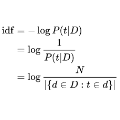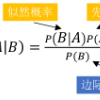This study evaluates the effectiveness of different feature extraction techniques and classification algorithms in detecting spam messages within SMS data. We analyzed six classifiers Naive Bayes, K-Nearest Neighbors, Support Vector Machines, Linear Discriminant Analysis, Decision Trees, and Deep Neural Networks using two feature extraction methods: bag-of-words and TF-IDF. The primary objective was to determine the most effective classifier-feature combination for SMS spam detection. Our research offers two main contributions: first, by systematically examining various classifier and feature extraction pairings, and second, by empirically evaluating their ability to distinguish spam messages. Our results demonstrate that the TF-IDF method consistently outperforms the bag-of-words approach across all six classifiers. Specifically, Naive Bayes with TF-IDF achieved the highest accuracy of 96.2%, with a precision of 0.976 for non-spam and 0.754 for spam messages. Similarly, Support Vector Machines with TF-IDF exhibited an accuracy of 94.5%, with a precision of 0.926 for non-spam and 0.891 for spam. Deep Neural Networks using TF-IDF yielded an accuracy of 91.0%, with a recall of 0.991 for non-spam and 0.415 for spam messages. In contrast, classifiers such as K-Nearest Neighbors, Linear Discriminant Analysis, and Decision Trees showed weaker performance, regardless of the feature extraction method employed. Furthermore, we observed substantial variability in classifier effectiveness depending on the chosen feature extraction technique. Our findings emphasize the significance of feature selection in SMS spam detection and suggest that TF-IDF, when paired with Naive Bayes, Support Vector Machines, or Deep Neural Networks, provides the most reliable performance. These insights provide a foundation for improving SMS spam detection through optimized feature extraction and classification methods.
翻译:暂无翻译




